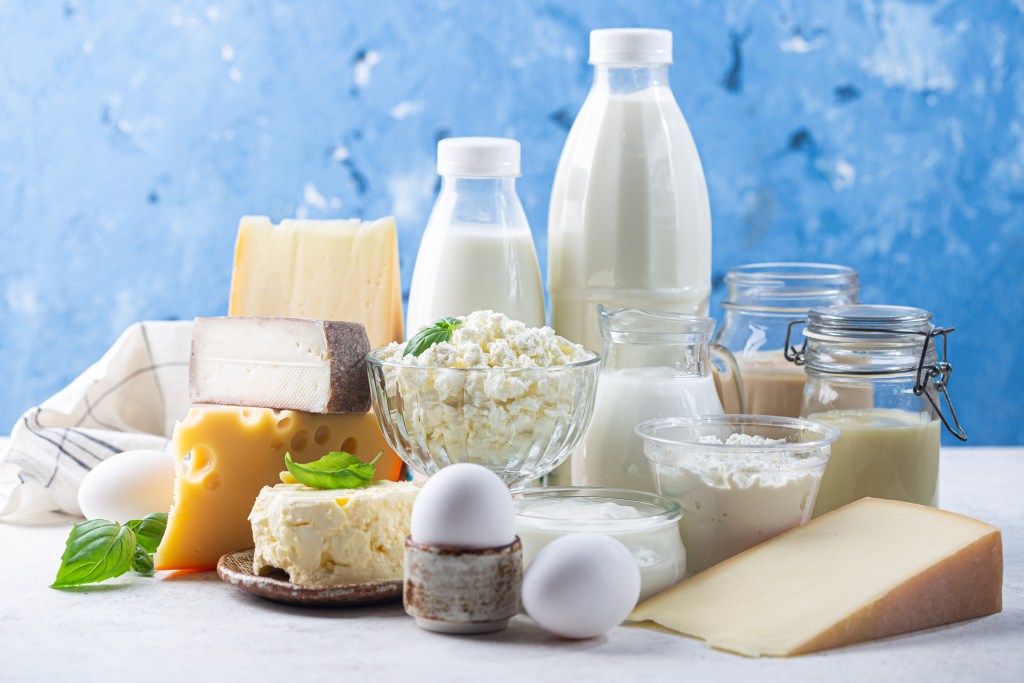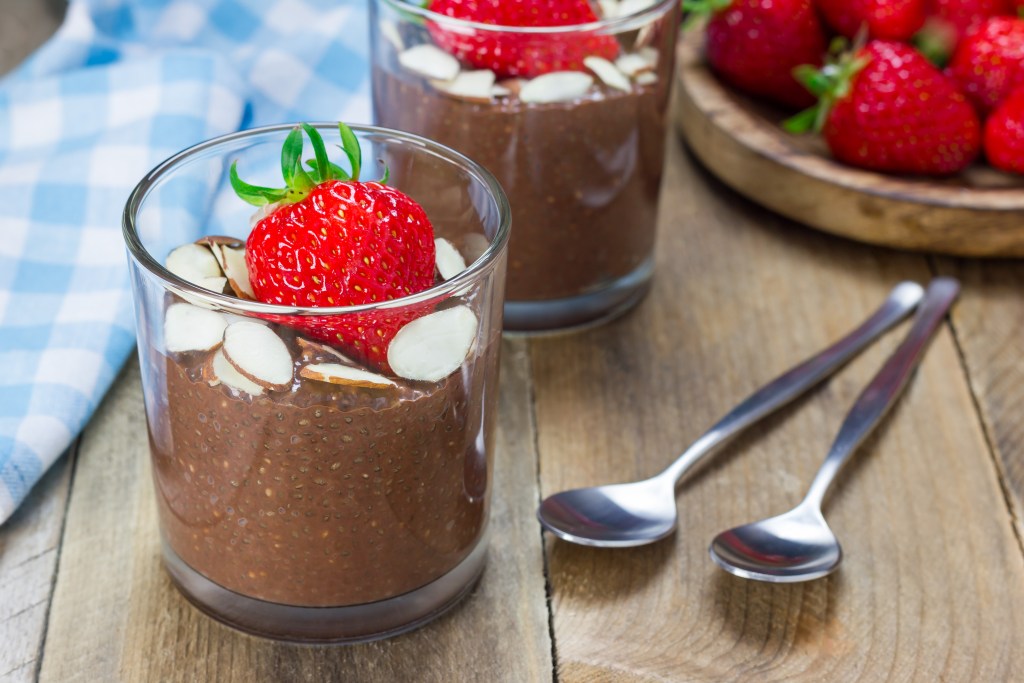At a glance
Low calcium may contribute to issues with bone density, muscle coordination, or energy regulation, making it essential to include enough calcium-rich foods in your diet. Because nutrient balance influences calcium absorption, the best sources of calcium are whole foods that naturally pair calcium with supportive nutrients to help maintain long-term skeletal and metabolic health.
Calcium is the most abundant mineral in the human body, and including enough calcium-rich foods in your diet is essential for promoting overall health and wellness.
Without maintaining calcium balance, you may experience weak bones and teeth, as well as changes in muscle and nerve function, mental clarity, blood flow, and cellular repair.
Explore calcium’s vital role and discover five of the best natural food sources of calcium that you can easily incorporate into your diet to support calcium balance.
What is calcium?
Calcium, an essential mineral supporting hundreds of bodily functions, is naturally present in a wide range of plant and animal foods.
In food, dietary calcium is typically bound to other molecules, appearing as compounds such as calcium phosphate in dairy products and fish bones, calcium citrate found in certain fruits, or calcium oxalate in leafy greens.
Other types of calcium, such as calcium sulfate, can be found in foods such as tofu and certain vegetables.
When you consume calcium-containing foods, stomach acid and digestive enzymes help cleave calcium into its ionic form, which the body can absorb in the small intestines.
The body’s ability to absorb and utilize calcium varies depending on the exact calcium compound, nutrient levels, and individual health status.
“Maintaining balanced levels of magnesium, vitamins C, D, and K2, along with supporting stomach acidity, is key to efficiently absorbing calcium and directing it to the right places, such as bones and teeth, rather than soft tissues,” Dr. Berg explains.
Over 99 percent of the body’s calcium is stored in the bones and teeth, providing structure and stability. The remaining one percent circulates in the blood to support essential cellular processes.
Unlike many other minerals, such as sodium or potassium, calcium isn’t rapidly lost from the body. Instead, the body regularly shifts calcium in and out of the skeletal system to maintain stable blood levels.
If calcium intake is consistently low, the body removes it from bone reserves, which can weaken bone strength over time and may lead to conditions such as osteopenia or osteoporosis. Insufficient calcium can also disrupt normal muscle, nerve, and heart functions.
Conversely, excessive calcium levels, often due to a diet lacking calcium-balancing nutrients, can increase the risk of arterial calcification and cardiovascular disease.
This underscores the importance of maintaining a steady supply of calcium-rich foods as part of a healthy eating routine, which is essential for long-term wellness.
Watch the video below to discover which food contains the highest amount of calcium.
How much calcium do you need daily?
According to data published by the National Institutes of Health (NIH), the daily recommended intake of calcium ranges from 1000 mg to 1200 mg for adults.1
Unfortunately, many parts of the world have low dairy consumption, and many individuals don’t get adequate amounts of calcium from their diet.
Additionally, those following a vegan diet or living with lactose intolerance may struggle to meet daily calcium targets if they don’t carefully plan their meals.
Common signs of calcium deficiency include:
- Difficulty sleeping
- Muscle cramps or spasms
- Brittle nails or teeth
- Dry skin or hair
- Bone loss
- Bone discomfort or tenderness
- Changes in heart rhythm
- Difficulty swallowing
- Tingling or pins and needles sensations
- Confusion or memory issues
- Low mood, irritability, or increased anxiety
Research published in Nutrients emphasizes that calcium balance depends not only on the amount consumed but also on the body’s ability to absorb dietary calcium, which may vary depending on the source and individual factors.2
The researchers note that “Calcium bioavailability can be influenced by various physiological factors, e.g., vitamin D status, age, pregnancy, disease, but also by the food’s composition of nutrients.”
This highlights the importance of maintaining a healthy lifestyle and obtaining calcium from nutrient-dense food sources to support not only adequate calcium intake but also the body’s ability to utilize it.

Health benefits of calcium
While calcium is best known for supporting healthy bones and teeth, this essential mineral is involved in numerous other critical bodily processes beyond the skeletal system.
Circulating calcium facilitates muscle function by enabling muscle fibers to contract and relax, helps stabilize heart rhythm, and ensures nerves transmit signals efficiently.
Calcium also plays a vital role in blood clotting, making it a crucial component of the wound healing process.
At the cellular level, calcium supports cell communication by facilitating signal transmission across membranes. It also influences enzyme and hormone activity, helps maintain tissue integrity, and regulates energy metabolism.
Research published in Nature Reviews Immunology highlights that calcium signaling in immune cells is crucial for essential functions such as cellular proliferation and cytokine secretion, which support the body’s immune response. 3
Additionally, maintaining an adequate calcium intake has been linked to a lower risk of developing metabolic syndrome and related weight gain and blood sugar issues.

5 best sources of calcium
One of the best ways to meet your daily calcium needs is through nutritious whole foods alongside calcium-supporting nutrients that enhance absorption and balance.
Here are five of the best natural sources of calcium to include in a healthy eating routine.
1. Cheese
Cheese is one of the best natural sources of calcium. Just one ounce of Parmesan cheese provides nearly 30 percent of the average recommended daily intake.
In addition to calcium, cheese delivers protein and fat-soluble vitamins that help the body absorb and use minerals effectively.
Because cheese is such a concentrated source, even small servings can provide a significant boost toward your daily calcium needs.

2. Yogurt
Grass-fed whole milk yogurt is a calcium powerhouse, offering up to 350 mg of calcium in an eight-ounce (226-g) serving, making it one of the richest dairy sources.
In addition to its exceptional mineral content, yogurt provides beneficial live cultures that may support gut health and help enhance the absorption of calcium and other essential nutrients.
3. Leafy green vegetables
Certain leafy greens are excellent sources of calcium and provide other essential minerals, such as magnesium, which aid in the absorption and utilization of calcium.
For example, one cup of cooked collard greens contains about 354 mg of calcium, while kale offers similar amounts. Turnip greens provide around 191 mg per 3.5 ounces (100 g), and watercress offers 150 mg per 3.5-ounce serving.
Herbs can be excellent sources too–just one tablespoon of dried basil or thyme can provide around 30 mg of calcium.

4. Nuts and seeds
Nuts and seeds provide calcium along with healthy fats and trace minerals, and adding them to your meals can be an excellent way to support your total calcium intake.
Almonds, for example, contain approximately 70 to 80 mg of calcium per one-ounce (28-g) serving.
Chia seeds, which are great for making delicious treats such as Keto-Friendly Chocolate Chia Pudding, are also notable sources, offering about 177 mg of calcium per tablespoon.
5. Seafood
Seafood–particularly small fish eaten whole, including their soft bones–can deliver a powerful calcium boost.
Canned sardines, bones included, can offer up to 382 mg of calcium per can, nearly 38 percent of a typical adult’s daily goal.
Certain dried fish varieties are even more concentrated. Dried Alaskan smelt, a traditional staple among indigenous and coastal communities in Alaska and the Pacific Northwest, can contain up to 1600 mg of calcium per 3.5-ounce serving, making it one of the most calcium-dense foods available.
Key takeaways
- Calcium supports bone strength, muscle contraction, nerve signaling, blood clotting, immune function, and energy metabolism.
- Adults typically need 1000 to 1200 mg of calcium daily, and inadequate intake can affect bone density, muscle function, mood, and overall metabolic balance.
- Calcium absorption and utilization depend on nutrient balance, including vitamins D and K2, magnesium, stomach acidity, and overall dietary composition.
- The best sources of calcium include cheese, yogurt, leafy greens, nuts, seeds, and certain seafood.
FAQ
1. What are the best sources of calcium?
Including calcium-rich foods is essential to support your body’s calcium needs naturally. Top sources include organic, grass-fed cheese, full-fat yogurt, kale, watercress, turnip greens, sardines, and anchovies, as well as nuts and seeds.
2. What are the signs you need more calcium in your diet?
Signs of inadequate calcium intake include muscle cramps, restless legs, brittle nails, poor dental health, dry or itchy skin, low moods, and cognitive changes. Over time, low calcium levels may lead to weak bones, increased fracture risk, and skeletal discomfort.
3. What depletes calcium?
Several factors can reduce calcium absorption and deplete calcium levels, including low vitamin D levels, high oxalate intake, excessive caffeine, alcohol consumption, and high sodium intake, as well as chronic stress and certain medications.
Conditions such as metabolic syndrome, insulin resistance, high blood sugar, and declining estrogen in postmenopausal women can also disrupt calcium regulation and bone density.
4. What fruit has the most calcium?
Dried figs are high in calcium, offering about 240 mg per cup. However, fruits typically contain less calcium than dairy, seafood, and leafy green vegetables, and their high sugar content may negatively affect calcium levels and overall health.
Sources
- https://ods.od.nih.gov/factsheets/Calcium-HealthProfessional/ ?
- https://www.mdpi.com/2072-6643/14/1/180 ?
- https://www.nature.com/articles/s41577-018-0110-7 ?












